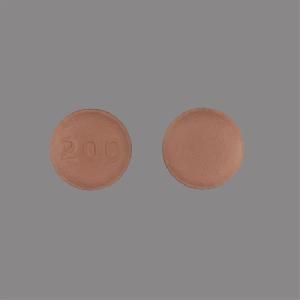Tiagabine Side Effects
Medically reviewed by Drugs.com. Last updated on Jun 9, 2025.
Applies to tiagabine: oral tablet.
Precautions
Tiagabine may cause dizziness, drowsiness, trouble in thinking, trouble with motor skills, or vision problems. Make sure you know how you react to this medicine before you drive, use machines, or do anything else that could be dangerous if you are not alert, well-coordinated, or able to think or see well.
This medicine will add to the effects of alcohol and other CNS depressants (medicines that make you drowsy or less alert). Some examples of CNS depressants are antihistamines or medicine for hay fever, other allergies, or colds; sedatives, tranquilizers, or sleeping medicine; prescription pain medicine or narcotics; barbiturates; other medicines for seizures; muscle relaxants; or anesthetics, including some dental anesthetics. Check with your medical doctor or dentist before taking any of the above while you are taking tiagabine.
Do not stop taking tiagabine without first checking with your doctor. Stopping the medicine suddenly may cause your seizures to return or to occur more often. Your doctor may want you to gradually reduce the amount you are taking before stopping completely.
Serious side effects of tiagabine
Along with its needed effects, tiagabine may cause some unwanted effects. Although not all of these side effects may occur, if they do occur they may need medical attention.
Check with your doctor as soon as possible if any of the following side effects occur while taking tiagabine:
More common side effects
- blue or purple spots on skin
- difficulty in concentrating or paying attention
Less common side effects
- burning, numbness, or tingling sensations
- clumsiness or unsteadiness
- confusion
- itching
- mental depression
- speech or language problems
Rare side effects
- agitation
- bloody or cloudy urine
- burning, pain, or difficulty in urinating
- frequent urge to urinate
- generalized weakness
- hostility
- memory problems
- quick to react or overreact emotionally
- rash
- uncontrolled back-and-forth and/or rolling eye movements
- walking in unusual manner
Symptoms of overdose
- agitation (severe)
- clumsiness or unsteadiness (severe)
- coma
- confusion (severe)
- drowsiness (severe)
- increase in seizures
- mental depression
- severe muscle twitching or jerking
- sluggishness
- speech problems (severe)
- weakness
Other side effects of tiagabine
Some side effects of tiagabine may occur that usually do not need medical attention. These side effects may go away during treatment as your body adjusts to the medicine. Also, your health care professional may be able to tell you about ways to prevent or reduce some of these side effects.
Check with your health care professional if any of the following side effects continue or are bothersome or if you have any questions about them:
More common side effects
Less common side effects
See also:
For healthcare professionals
Applies to tiagabine: oral tablet.
Dermatologic adverse events
- Very common (10% or more): Common (1% to 10%): Rash, pruritus
- Uncommon (0.1% to 1%): Dermatitis bullous dermatitis, bruising
- Frequency not reported: Vesiculobullous rash, exfoliative dermatitis[Ref]
Cardiovascular
- Common (1% to 10%): Vasodilation[Ref]
Gastrointestinal
- Very common (10% or more): Nausea (11%)
- Common (1% to 10%): Abdominal pain, diarrhea, vomiting, increased appetite, mouth ulceration[Ref]
Hepatic
- Very rare (less than 0.01%): Abnormal hepatic function (elevated SGPT, GGT)[Ref]
Musculoskeletal
- Common (1% to 10%): Myasthenia, muscle twitching[Ref]
Immunologic
Nervous system
- Very common (10% or more): Dizziness (27%), asthenia (20%), somnolence (18%), nervousness (10%), tremor
- Common (1% to 10%): Ataxia, paresthesia, abnormal gait, nystagmus, speech disorder
- Uncommon (0.1% to 1%): Nonconvulsive status epilepticus
- Frequency not reported: Encephalopathy[Ref]
Ocular
- Very common (10% or more): Blurred vision, visual field defects
- Common (1% to 10%): Amblyopia, diplopia[Ref]
Respiratory
- Common (1% to 10%): Pharyngitis, cough, rhinitis[Ref]
Psychiatric
- Common (1% to 10%): Difficulty with concentration/attention, insomnia, confusion, memory loss, depressed mood, emotional lability, hostility/aggression, agitation
- Uncommon (0.1% to 1%): Depression, psychosis
- Rare (0.01% to 0.1%): Hallucinations, delusion[Ref]
Other
- Very common (10% or more): Accidental injury (17%)
- Common (1% to 10%): Pain (unspecified), fatigue[Ref]
References
1. Cerner Multum, Inc. "UK Summary of Product Characteristics."
2. Cerner Multum, Inc. "Australian Product Information."
3. (2022) "Product Information. TiaGABine Hydrochloride (tiaGABine)." Teva Pharmaceuticals USA
More about tiagabine
- Check interactions
- Compare alternatives
- Pricing & coupons
- Reviews (8)
- Drug images
- Dosage information
- During pregnancy
- Drug class: gamma-aminobutyric acid reuptake inhibitors
- Breastfeeding
- En español
Patient resources
Other brands
Professional resources
Other brands
Related treatment guides
Further information
Tiagabine side effects can vary depending on the individual. Always consult your healthcare provider to ensure the information displayed on this page applies to your personal circumstances.
Note: Medication side effects may be underreported. If you are experiencing side effects that are not listed, submit a report to the FDA by following this guide.

